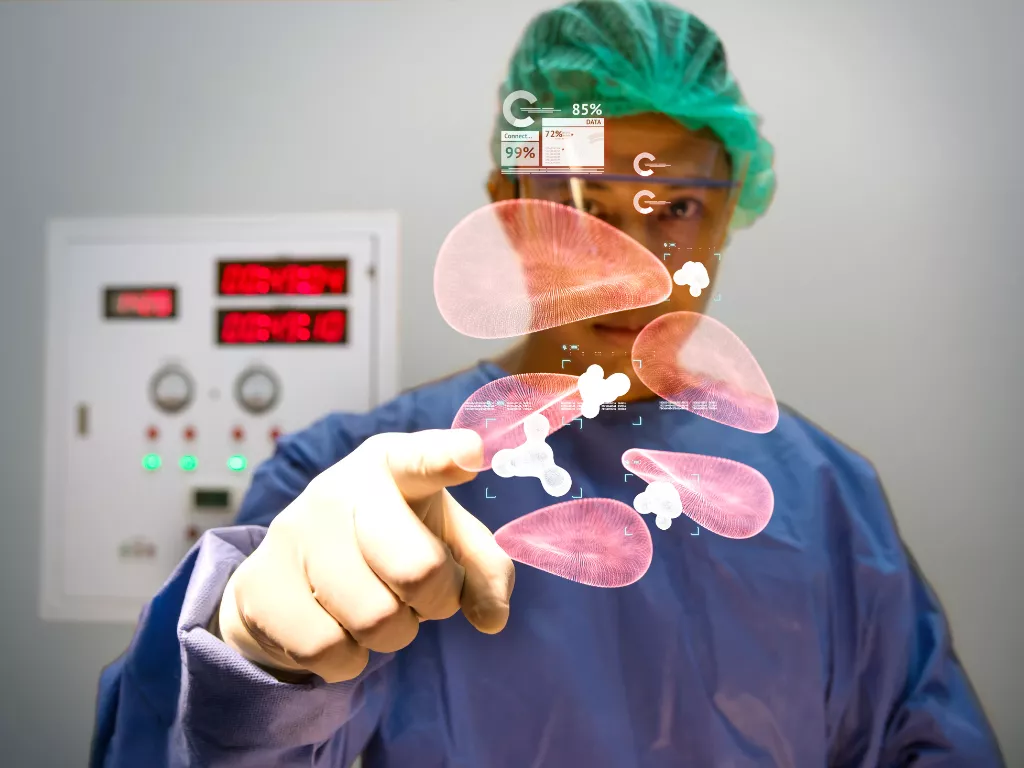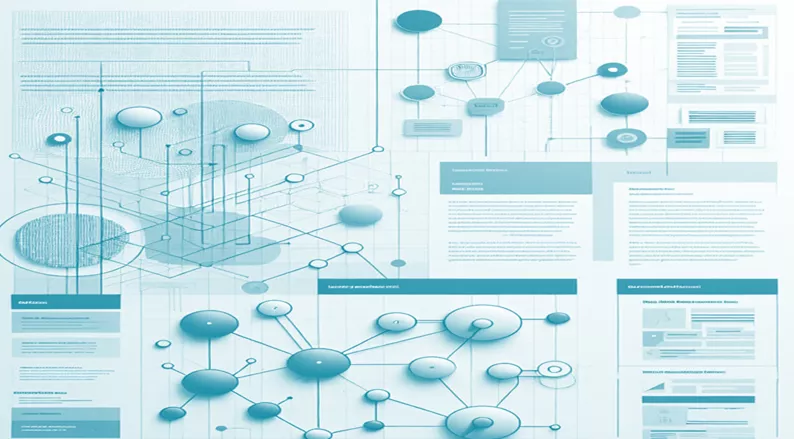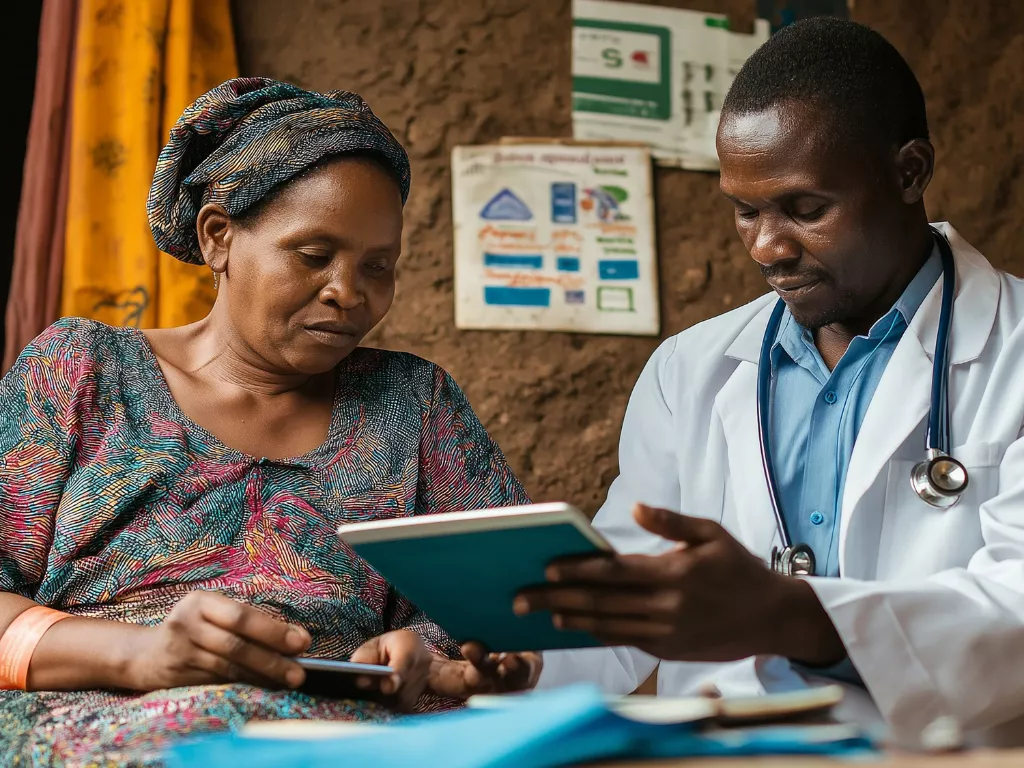Augmented Reality – Revolutionizing Medical Education and Healthcare
Introduction
Traditional methods in medical education and healthcare practices have significant limitations. For education, they are constrained by 2D images and cadaver use. In healthcare, procedural errors and complex surgeries can benefit from technological assistance. There is a need for more interactive, engaging, and precise methods in both training medical professionals and providing patient care.

Augmented Reality superimposes digital elements—like images, videos, or 3D models—onto the physical environment, enhancing our interaction with the real world. Users can see digital enhancements integrated with their physical surroundings using AR glasses or a smartphone. Unlike Virtual Reality (VR), which creates entirely virtual environments, AR enhances the real world with additional information. This makes AR particularly useful for applications where real-world interaction is crucial.
Augmented Reality (AR) is revolutionizing multiple industries by blending digital elements with the real world. AR enhances learning experiences in medical education, but its impact extends beyond the classroom. AR also transforms the healthcare sector, offering innovative solutions that improve patient care and streamline medical practices.
Discover how AR transforms medical education and healthcare.
AR in Medical Education
- Understanding Anatomy: AR provides 3D visualizations of the human body, allowing students to interact with and explore anatomical structures more dynamically than traditional textbooks.
- Surgical Training: AR enables surgeons to practice techniques in a simulated environment and receive real-time guidance during actual procedures.
- Learning Procedures: AR offers interactive, step-by-step instructions for various medical procedures, helping students and professionals practice and perfect their skills.
- Patient Education: AR tools help patients visualize and understand their conditions, leading to better engagement and adherence to treatment plans.
AR in Healthcare: Transforming Patient Care and Medical Practices
- Surgical Assistance:
- Precision Enhancement: AR can overlay critical information, such as the location of blood vessels, onto the patient’s body during surgery. This real-time data integration helps surgeons make more accurate incisions and better navigate complex anatomical structures.
- Guided Procedures: Surgeons can use AR to follow detailed, step-by-step guidance during operations, reducing the risk of errors and improving outcomes.
- Medical Imaging and Diagnostics:
- Enhanced Imaging: AR can integrate with medical imaging technologies like MRI and CT scans, providing real-time, 3D views of internal organs and tissues. This aids in achieving greater diagnostic precision and optimizing treatment strategies.
- Interactive Diagnostics: AR allows doctors to interact with and manipulate diagnostic images, making it easier to identify issues and discuss findings with patients intuitively.
- Patient Rehabilitation:
- Interactive Therapy: AR-based rehabilitation programs turn physical therapy exercises into interactive, engaging activities, improving patient motivation and adherence to treatment.
- Remote Monitoring: AR allows healthcare providers to monitor patient progress remotely, to ensure optimal recovery.
- Training and Simulation:
- Continual Learning: Healthcare professionals can use AR for ongoing training and skill development. AR simulations can recreate rare or complex medical scenarios for practice without putting patients at risk.
- Emergency Response: AR can help medical staff practice and prepare for emergencies by simulating high-pressure scenarios and providing interactive problem-solving exercises.
Benefits of AR in Medical Education and Healthcare
- Enhanced Learning and Practice: AR makes learning more engaging and interactive, helping medical students and professionals grasp complex concepts and procedures more effectively.
- Improved Precision and Safety: AR enhances precision during surgeries and diagnostic procedures in healthcare, reducing the likelihood of errors and improving patient safety.
- Convenience and Accessibility: AR tools can be used in various settings, providing valuable training and patient care solutions without requiring extensive physical equipment.
Examples of AR Success Stories
- Medical schools and hospitals around the world are successfully integrating AR.
- AR is used to train surgeons with virtual simulations, and hospitals use AR for real-time guidance during complex surgeries.
- Companies are developing AR applications for patient rehabilitation and diagnostic imaging, highlighting the practical benefits of AR in improving patient outcomes and streamlining healthcare practices.
Challenges and Considerations
- Technical Limitations: Augmented Reality (AR) faces several technical challenges, including limited hardware capabilities (like processing power and battery life), accurate tracking and localization, and complex content creation. Additionally, ensuring intuitive user interactions and addressing privacy concerns are crucial for a seamless user experience. Balancing these factors is key to successful AR development.
- Cost and Access: Implementing can be expensive, and ensuring equitable access for all healthcare providers and patients is a significant consideration. Affordable solutions need to be developed to promote widespread adoption.
Integration with Existing Systems: AR must be seamlessly integrated into current medical practices and educational frameworks to ensure its benefits are maximized without disrupting existing processes or workflows.
The Evolving Role of AR in Medical Education and Healthcare
- As AR technology evolves, we can expect significant improvements in realism and functionality. Future developments may include more sophisticated simulations and greater integration with other digital health tools.
- AR has the potential to continually enhance medical education and healthcare delivery, supporting ongoing learning, improving patient care, and fostering innovation in medical practices.
Its role will continue to expand, providing new ways for professionals to engage with complex medical concepts and for patients to experience more interactive care.
Conclusion:
Augmented Reality is making significant strides in both medical education and healthcare. By providing immersive learning experiences and innovative solutions for patient care, AR transforms how medical professionals are trained and how healthcare is delivered. Embracing AR technology promises to drive further advancements and improve outcomes across the healthcare sector, making it an invaluable tool for the future of medical practice and education.

This blog is written by Shalini Kumari a Senior Software Engineer at Decos, where she specializes in fixing bugs and enhancing various modules of the Otosuite and Noah applications. With expertise in the MVVM Community Toolkit and .NET, she plays a crucial role in delivering robust and efficient software solutions that meet the needs of our clients.
Decos is a cutting-edge technology services partner ready to meet your diverse needs across various industries, including the medical domain. If you have a question about one of our projects or would like advice on your project or a POC, contact Devesh Agarwal. We’d love to get in touch with you!
Discover more

Reducing Latency in Real-Time Medical Monitoring to enhance speed, accuracy and patient safety.

Building Better Digital Experiences with Information Architecture

